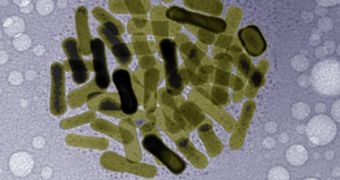Researchers from the Massachusetts Institute of Technology have again proved their genius recently, when they have created a new method of targeting cancer tumors directly inside a patient's body. It's long been known that heat is one of the phenomena that can significantly hinder the growth of a tumor, and even completely eradicate it. But, thus far, the problem has been that there was no way for doctors to only heat a certain group of cells, while leaving those nearby intact. Now, it would appear that MIT scientists have found a solution to this problem, and a very elegant one at that.
In their research, they turned to gold nanorods. In previous researches, they had learned that these nanoparticles heated up when exposed to infrared light wavelengths, and so they set out from that knowledge. The next thing they had to do was to find a method with which to “guide” the nanorods exactly inside a tumor, and not leave any of them outside. The entire idea for the new targeting method was then made clear – place the nanorods inside the tumor, target them with infrared light, heat them, and destroy the tumor.
Inserting them into tumors was fairly simple. The team coated the gold nanoparticles in a special polymer, which could withstand the attacks any intruders received in the blood system. They then travel along the blood vessels, and take advantage of the fact that pores in the blood vessels located around cancer cells are just large enough for them to enter. So, they accumulate inside the cancer formations, and, within three days, the ones that don't are removed by the liver and spleen.
When subjected to the effects of an infrared laser, the particles heat to about 70 degrees Celsius, which is high enough to kill any cancer tumor. However, if doctors deem it too dangerous to heat them so much, they can be “turned on” to a lower temperature, and thus weaken the tumor as much as to allow for conventional chemotherapy to get through and finish the job.
In addition to the direct potential that the gold nanorods have in curing tumors, they could also be used for internal imaging, if near-infrared-sensitive molecules are added on top of them. Using an imaging technique known as Raman scattering, all internal organs could be mapped, and if anything “lights up,” then it's a sign that tumors may exist there.
The study was conducted by MIT graduate student Geoffrey von Maltzahn, who worked together with MIT David H. Koch Institute for Integrative Cancer Research member and Howard Hughes Medical Institute Investigator Sangeeta Bhatia. The latter expert is also a Professor in the Harvard-MIT Division of Health Sciences and Technology (HST), as well as in the Department of Electrical Engineering and Computer Science. Details of the find appear in the latest issues of the scientific journals Cancer Research and Advanced Materials.

 14 DAY TRIAL //
14 DAY TRIAL //